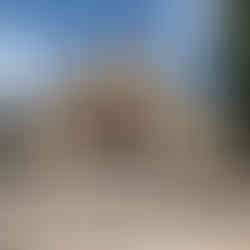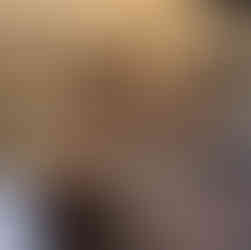Bourgogne II. Beaune
- Paolo Mittiga

- Jun 29, 2019
- 4 min read

Finally after few days through Beaujolais and the Maconnaise we arrived in Beaune the capitol of Bourgogne.
A very elegant small town with excellent restaurants and shops mostly themed around their great wines.
Walking on the stones roads in the center of town was truly a pleasure.
Of course, you are visiting Beaune by foot. This is the only way to visit the town. You can leave your car on the surrounding avenues at the foot of the walls which Louis. XI made the people of Beaune pay for in order to atone for their spirit of independence: but the town got its revenge by transforming the ramparts and the King's barracks into cellars... The heart of the town is not very large but it is quite unpredictable. The churches: Notre
Dame," the superb Saint-Nicolas on the outskirts of the town, the Chapelle du Temple where the last great master of the '«Poor Knights of Christ» Jacques de Molay, who was burned to death by Philip the Handsome, took his vows, have prepared you for a medieval town. The Hotel Dieu has transported you to the radiant duchy «Monseigneur de Bourgogne». You will also discover a
Renaissance style - elegant and affected - and many classical buildings of the great French eras... Be curious, go into the courtyards, push the doors open to be guided around. The treasures: open-air stair stairways, unreal balconies, hidden gardens, are just beyond the threshold. Every now and again, winding staircases penetrate the rock: under the stone vaults oak casks and tens of thousands of bottles are laid out.
Before adventuring into the streets of Paradise and Hell, take a look at the Museum of Wine. This is located in the ancient palace of the Dukes of Burgundy. The sovereigns used to stay there during the sessions of the legal division of the Court. They also came to watch over the harvesting of their vineyards: a lot of their spirit has remained in the palace. Imagine in this background of stone and wood, these men, lords of at least half of Europe, who knew that power does not have enjoyment as its aim nor terror as its means...
Beaune takes center place on the world stage during the annual Hospice de Beaune wine auction. The Hotel Dieu , built in the flamboyant style, the huge silent cellars of the negociants houses, and the wine growing domaines of the district all attract countless visitors.
The Hôtel-Dieu

was founded on 4 August 1443, when Burgundy was ruled by Duke Philip the Good. The Hundred Years' War had recently been brought to a close by the signing of the Treaty of Arras in 1435. Massacres, however, continued with marauding bands (écorcheurs) still roaming the countryside, pillaging and destroying, provoking misery and famine. The majority of the people of Beaune were declared destitute. Nicolas Rolin, the Duke's Chancellor, and his wife Guigone de Salins, responded by building a hospital and refuge for the poor. The majority of the population of Beaune were destitute, and the area had recently suffered an outbreak of plague. Having gained permission from Pope Eugene IV in 1441, the hospice was built and consecrated on 31 December 1452. In conjunction, Rolin established the "Les sœurs hospitalières de Beaune" religious order.
The building's design was probably overseen by the Flemish architect Jacques Wiscrère and remained as a hospital until the late 1970s.
The wines of Beaune
The Beaune vineyards are among the most extensive of the Cote. from here comes the Pinot vermilion of the Dukes of Bourgogne; a red wine aromatic and full of fire , whose reputation goes back to the late Middle Ages.
Appellation Village of the Côte de Beaune région (Côte-d'Or).
This appellation includes 42 Premiers Crus Climats.
Producing commune: Beaune.
The appellation BEAUNE and BEAUNE PREMIER CRU may be followed by the name of the Climat of origin. the Beaune AOC was established in 1936.
In the synclinal of Volnay the Comblanchien limestone disappears into the depths to be replaced by the overlying Rauracian. The slopes are quite steep and the soil (scree-derived black rendzinas) thinnish. On the lower slopes are Argovian marts and deep soils, white, grey or yellow, tinged with red from the iron in the Oxfordian limestone. At the foot of the slope, limestones are mixed with clay. Exposure: east to due south. Altitudes: 220 to 300 metres.

Small differences appear, depending on the exact location. Wines from the Northern end of the commune are more often intense and powerful, and those from the southern end are smoother and fuller.
Red: this wine has a striking and vivid colour - a luminous scariet, introducing aromas of black fruits (blackcurrant, blackberry) and red (cherry, gooseberry/), as well as humus and underbrush. When older, it is redolent of truffle, leather, and spices. In youth, it charms the palate with the taste of crunchy fresh grape. Firm, upright and full of juice, it evolves with time, revealing a solid and absolutely convincing structure.
White: this wine boasts a silky gold colour, flecked with green It has a of almond, dried fruits, bracken, and white flowers, It may be enjoyed either young "on the fruit" or later for its mouth filling mellowness.
This ends Beaune , of course we spent six days in this beautiful town, from there we travelled through the Côte d’Or. Follow us for more information on this beautiful Holy Land of wine. The next blog will be on the Cote de Beaune and its fabulous AOCs. To the next one.
































































































Comments